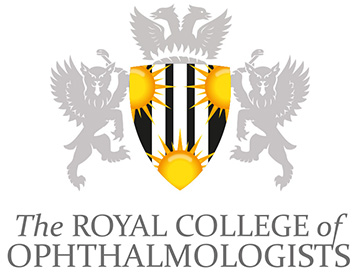NICE press release: People at low risk of developing glaucoma can avoid unnecessary referrals
2 November 2017
NICE – the National Institute for Health and Care Excellence – has updated its guidance on the diagnosis and management of chronic open angle glaucoma (COAG).
The new guideline now includes a section on what tests should be carried out by primary eye care professionals to determine if referral to a specialist is necessary. This should help reduce the number of referrals that aren’t needed and allow specialists in secondary care to focus on those who need treatment.
Glaucoma is a common condition and is the cause of sight loss in around 10% of the 360,000 people registered as blind in the UK [1]. It occurs when the nerve responsible for sight becomes damaged.
There are several forms of glaucoma with chronic open angle glaucoma being the most widespread, affecting around 480,000 people in England. This equates to more than one million glaucoma-related outpatient visits to hospital eye clinics annually.
An increase in pressure within the eye (also called ocular hypertension) is a major risk factor for developing COAG (chronic open angle glaucoma) . Lowering this pressure is an important way of preventing COAG, and this is primarily achieved through use of prostaglandin analogue (PGA) eye drops.
The updated referral criteria in the guideline is based on the use, in primary eye care, of Goldmann-type applanation tonometry, which makes contact with the eye surface to measure inner eye pressure.
The guideline recommends that an inner eye pressure threshold of 24mmHg and over should be used to prompt referral and treatment for ocular hypertension.
This is a change from current practice of referring patients with an inner eye pressure of over 21mmHg, to better represent the population at risk of developing COAG.
The committee also made the recommendation to consider repeating measurements on another day before referral.
Currently in areas with no referral filtering in place, around 30-40% of people referred to secondary eye care services are false positive referrals. This places a significant and unnecessary demand on secondary eye care services.
The independent guideline committee recommended that people with an inner eye pressure below 24 mmHg should continue regular visits to their primary eye care professional so any future increase in pressure is detected.
Professor Mark Baker, Director of the centre for guidelines at NICE, said: “ Chronic open angle glaucoma is a condition that should be taken seriously. People at risk of the condition should be carefully monitored so that it can be treated early.
“Approximately 1.8 million people in the UK have an inner eye pressure of 22 or 23 mmHg. That puts a huge demand on secondary eye services for patients who don’t need immediate treatment. Having a clear referral and treatment pathway to identify patients with ocular hypertension and suspected COAG ensures patients are assessed and treated in the most appropriate setting.
“Increasing the treatment threshold will not only lead to fewer patients being referred unnecessarily but it should reduce costs without compromising patient safety.”
John Sparrow, chair of the guideline committee, said: “The new referral criteria for ocular hypertension will mean fewer people will need to go through the worry of being referred for a possible problem if the risk of sight loss in their lifetime is negligible. These patients can avoid the costs of unnecessary prescriptions while getting regular sight tests to catch the onset of COAG early on.
“It will also mean those at a higher risk of developing COAG can be prioritised to ensure timely treatment.”
The updated guideline also recommends using generic PGA ( prostaglandin ) eye drops over branded PGAs which should also reduce costs. If half of the branded items currently prescribed were changed to generic PGAs then around £11m savings would be made.
NICE has also published an updated quality standard to align with this guidance.
NHS organisations with responsibilities for commissioning and providing services for people with glaucoma should compare their current practice with these recommendations and consider what changes may need to be made to put them into practice. In considering any changes, they should take into account any extra costs and any savings involved. The speed at which these recommendations are adopted by local NHS services will depend on the resources they have available and the other priorities they are dealing with.
References
About the guidance
The guidance will be available at www.nice.org.uk/guidance/ng81 from 1 November 2017.
